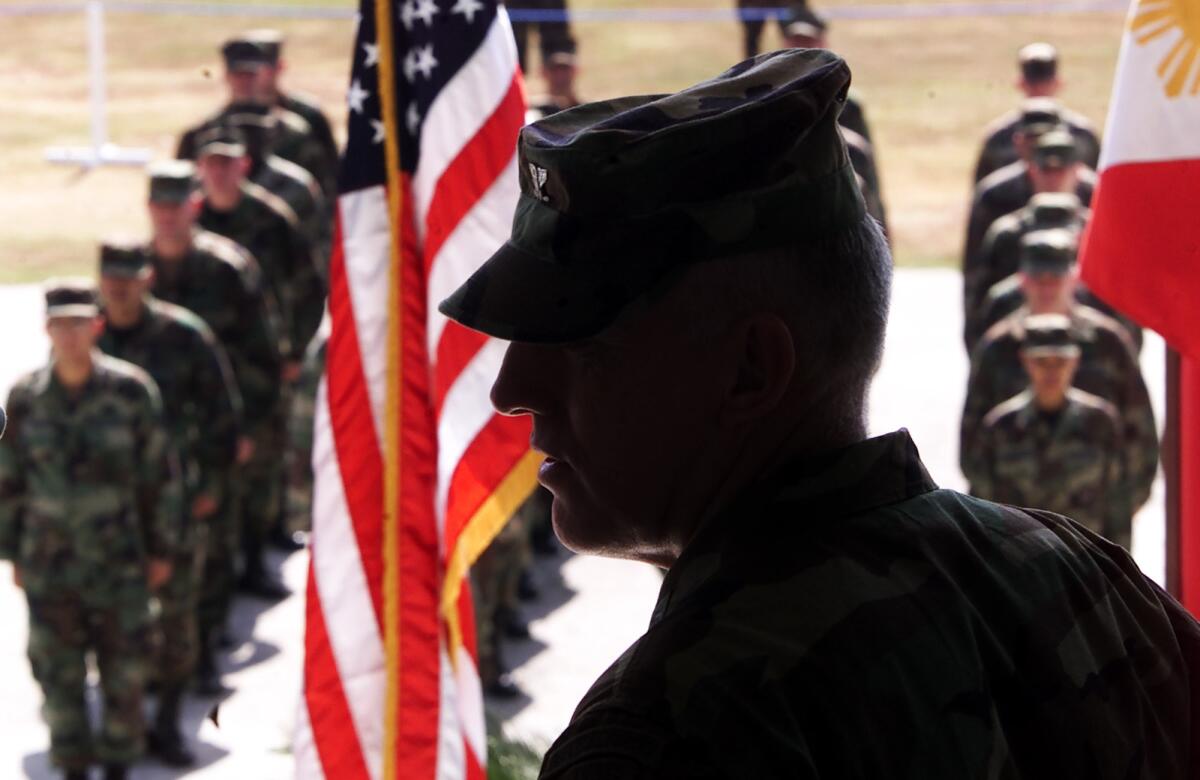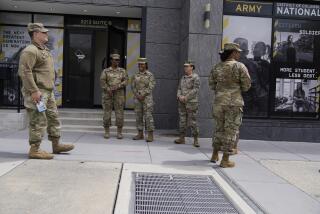How big an Army do we need?

Almost every time this country finishes a major war, we cut the Army appropriately — and then we cut too much.
After World War II, we demobilized massively, but then went too far. The result in 1950 was Task Force Smith, the first U.S. Army ground unit to enter combat in Korea, and a debacle on the peninsula as the Army was unprepared for what ensued in the early months of that conflict.
After Vietnam, we not only downsized but allowed readiness and standards of excellence to keep declining. The so-called hollow Army resulted, with rampant drug use, poor morale and an overall condition that virtually all soldiers who remember it say they would never want to relive.
We did a bit better after the Cold War, as Defense Secretaries Dick Cheney, Les Aspin, William Perry and William Cohen conducted a major but carefully managed drawdown, taking the standing Army from 800,000 soldiers to about 500,000 and adopting a two-war standard for sizing the combat force structure. Then, with Saddam Hussein gone and Iraq no longer an overland threat to its neighbors, the two-war standard could be relaxed, and the Obama administration has done so.
But we now hear talk from the Pentagon of possible cuts to 380,000 active-duty soldiers, based on its Strategic Choices and Management Review this summer — with no apparent strategic rationale except that we are disinclined to conduct large-scale counterinsurgency operations any longer — making for a much smaller Army than we had in the 1990s. One recently retired chief of naval operations has even called for reducing the active-duty Army below 300,000.
In fairness to Secretary of Defense Chuck Hagel, it should be noted that he has continued to oppose the sequestration-scale budget cuts that might make such large and disproportionate cuts to the Army hard to avoid. But as congressional negotiators seek a new budget deal, they need to understand the implications of keeping in place defense cuts of anything like the $500-billion magnitude that would result under sequestration, and they should soften the expected blow on the Pentagon.
The United States no longer needs to plan its main combat forces, and specifically its standing Army, around a scenario of two simultaneous all-out ground wars. And it can make cuts to the Army that will be somewhat larger than for the other services. But we must not go too far.
The Army should retain what I call a “1+2” paradigm for sizing forces: The capacity for one prompt, large-scale combat operation along with two midsize and longer-term multilateral stabilization missions. This approach would allow for an active-duty Army of 425,000 to 450,000 soldiers, down from 560,000 at the end of the George W. Bush presidency and the beginning of the Obama administration, a figure that is already gradually declining.
One large potential operation that the Army simply must still prepare for is on the Korean peninsula. Heaven forbid that such a conflict occurs, but it cannot be dismissed as a possibility. Indeed, the odds of war would go up dramatically, in all likelihood, if we no longer planned or prepared for it (as in 1950). Through failed deterrence, or a small conflict that escalates, or internal North Korean collapse, it could happen.
As for the smaller but potentially long multilateral stabilization missions, it is distressingly easy to imagine a number of plausible cases. Recent history in places such as the Balkans, as well as likely demands in Afghanistan after 2014, make it quite plausible that we will participate in two missions at a time. We at least should have the capacity to do so.
An obvious short list of places where some type of peacekeeping or stabilization effort might someday be important to consider includes Syria, Libya, Yemen, Nigeria, Israel and a future Palestinian state (if there is a peace deal requiring implementation forces), parts of Pakistan (if help were requested by Islamabad), Kashmir (if India and Pakistan again fought over it, went up to the threshold of nuclear war and then agreed to a peace accord requiring monitoring and implementation) or parts of the Philippines (if localized insurgencies worsened).
Some would say the United States is averse to intervention in such places now. But America was highly casualty-averse in the 1990s and still wound up in two major missions in the Balkans and several smaller ones in Africa and the Caribbean, to cite just one period from recent history. Some say that the nation is tired of war abroad in general, and stabilization missions in particular, and should avoid such interventions in the future.
Fair enough. But to paraphrase the old Bolshevik line, while we may not have an interest in stabilization missions now, they may have an interest in us. American security could be threatened in ways we can only vaguely anticipate today.
We can indeed cut the Army, but not with reckless abandon, and not in the absence of a strategy.
Michael O’Hanlon is a senior fellow at the Brookings Institution and the author of “Healing the Wounded Giant: Maintaining Military Preeminence While Cutting the Defense Budget.”
More to Read
A cure for the common opinion
Get thought-provoking perspectives with our weekly newsletter.
You may occasionally receive promotional content from the Los Angeles Times.










